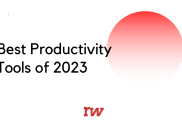
Brand Identity Design: Common Mistakes & Solutions Provided
Many companies continue to undervalue the significance of brand identity design. They concentrate on developing items and marketing them to their target market. Still, they occasionally overlook the fact that poor brand design can seriously jeopardize all of their marketing and sales efforts.
A well-planned and executed brand identity design will guarantee that you effectively express the mission and vision of your company to your target audience, regardless matter whether you are an established firm or just about to debut. And doing that will assist you in building a respectable, reliable brand that people will enjoy doing business with.
However, perfecting brand identity design is difficult, and even the most well-known companies occasionally make blunders. This article discusses five of the most typical brand identity design errors and suggests how to handle them.
What is brand identity design? Better know better design ideas.
A brand’s identity is its public face. As was covered in part before, a brand is a notion that can be both emotional and philosophical, while a brand identity is the visual representation of that idea.
Brand identity, which consists of logos, typography, colors, packaging, and messaging, supports and strengthens an established brand’s reputation. A brand’s identity design draws in new customers while establishing a sense of familiarity with current ones. It faces both outward and inside.
Essentially, brand identity design is the application of brand identity. Everything else that visually reflects your brand is, in essence, part of your brand identity design. Your total brand is made up of your perceived image as well as the visual elements. It’s the initial impression you give your clients.
Brand identity design is a five-stage process:
- Research, and evaluation of the competition.
- Brand development with purpose.
- Specialized brand identity design.
- Across all mediums, consistent brand communication.
- Feedback, performance evaluation, and upkeep.
Brand identity design needs to be enduring. To deliver genuine values that connect with audiences, strategy, and design work together. Identity design is a well-organized action plan to develop a successful brand.
Why must business have a solid brand identity design process?
Your brand identity design is essentially the representation of who you are to the outside world. It’s the character of your company. Are you a business that can handle significant and large projects? Therefore, it should be reflected in your visual brand design. It should also convey your standards of excellence and reliability.
Visuals are important since your identity design needs to stand out from the competition if it is to flourish. The most popular information sources for industrial enterprises are websites, search engines, and catalogs. While we’ll constantly emphasize the value of quality content, an audience will first notice your brand’s visual appeal.
To stand out from your competition is perhaps one of the most crucial reasons you should invest in the caliber of your identity design. For instance, there might be at least thirty different excavating companies in your neighborhood, but putting effort and time into building a strong brand can help your company stand out from the competition.
The most common brand identity design mistakes & solutions
-
Neglecting your target audience in the brand design system
Not everyone should be drawn to a brand for it to be successful. You would be wise to give up that notion now if you think that everyone will approve of what you do. Instead, a strong brand identity design will help you engage the proper individuals in conversation—those most likely to use your products and services.
But what if you have no idea who those people are? Your marketing efforts will be based on speculation if you don’t have a solid understanding of your target market. Additionally, you’ll likely squander time and money attempting to reach the wrong demographic.
Solution: Establish a buyer persona.
You must be aware of your intended audience if you want to communicate effectively. Your ideal customer can be found, and their needs and goals can be understood using a buyer persona. Additionally, it will assist you in formulating a strategy for effective client interaction.
-
Unreliable images in the brand design process
Want people to immediately think of your company’s name? Use pictures. People visualize their ideas. In addition, visuals help individuals remember. This is especially helpful in the modern digital age, where social media feeds are filled with unending streams of competing content.
Your logo can stand out from the crowd by using a photo to make it pop. But if you don’t maintain consistency, that won’t help you at all.
You want customers to think of your brand when they see specific forms of graphics. Additionally, you want to be recognizable by your audience across all media. But if your images are disorganized, it will be tough for customers to achieve that.
Solution: Publish A Style Guide.
A style guide is a written description of the fundamental ideas guiding your identity design. This will benefit you and any designers and content producers you work with, whether they are your company’s employees or not.
If you own a startup or a smaller business, your style guide shouldn’t be a big book. However, it would be helpful if you listed the fundamentals, such as:
- Color schemes.
- Various logo and design options.
- Typefaces and typography.
- Iconography.
- Letterheads.
- Assets on social media.
-
Copying others’ design ideas
We’ve discussed how consistent images can increase brand recognition among consumers. Unfortunately, none of that matters if your designs appear boring and unoriginal, for instance, by selecting a logo color simply because it is fashionable or by employing generic stock images.
Copying another imagery, whether on purpose or not, can only confuse shoppers. Potentially worse, your marketing initiatives might even steer customers toward your rivals. You run the additional danger of having a shoddy imitation of your company.
Solution: Conduct research
It pays to conduct research before creating a new logo or other brand graphics. You should start by examining the visuals that your rivals and other companies in your field utilize. Websites with business directories might make your search easier in this case.
Once you have a logo, a reverse image search might assist you in verifying its originality. Google Images is one location where you can accomplish this. Once there, select the camera icon to submit your photo or share the URL. Google will then show you a list of related pictures. You might need to reconsider if you find anything too comparable for your tastes.
-
Forget brand purposes in the brand design system.
This point is relevant to brands that have been in business for a while. You shouldn’t alter your branding as you already have clients who respect and recognize your logo.
Of course, periodically refreshing is necessary to demonstrate that you are up to speed with branding and pay attention to it. If you change certain aspects of your brand that your customers may enjoy or that help people recognize you, your sales may suffer, and you can come under fire from unhappy clients.
Solution: Establish Your Purpose Clearly
Your company exists for your brand. When you first started, you had some objectives outside of only producing money. If you didn’t, perhaps this is the ideal opportunity to pause and consider your long-term goals.
Contrary to popular assumption, your purpose need not be anything that will change the world or affirm your existence. For instance, if you own a restaurant, one of your goals might be to serve authentic food with high-quality ingredients. But whatever your objective, it must be sincere and persistent. Additionally, let your clients know the purpose for it to be useful in your marketing.
-
Forgetting their root services when having identity design
Most likely, your company provides a range of goods and services. Therefore, it only makes sense that you’d want to promote each of these services on your website and in your sales materials.
However, especially your core branding, you don’t want to overwhelm customers with a list of everything you offer. Being thorough might seem like the ideal method to ensure you don’t miss out on a possible client, but in practice, this strategy will likely irritate, perplex, and alienate your audience.
Solution: Make a unique selling proposition (USP).
A unique selling proposition (USP) can assist in defining your identity in the eyes of your clients. A USP not only aids in making your worth to clients clear, but it also provides a strong base around which to build the remainder of your brand marketing initiatives. This is because it keeps your marketing on point, especially in areas like your landing pages, where it counts the most.
-
No professional help
If you don’t realize how crucial brand identity design is, you can try to accomplish it alone and fail. Designing a brand involves much more than just creating a flashy logo. And if you want to get a high-quality identity design, you must exercise caution.
It would be preferable to work with a professional design business that can produce high-quality outcomes if you don’t have professional designers on your team who can manage all of this.
Solution: Hire a dedicated development team of designers
Today, many trustworthy firms offer a wide range of services that can help businesses improve their brands in development and design. They offer a group of qualified experts who can meet your needs in the finest method. Choose according to factors like price, brand name, and quality. To select an IT solutions company that suits your needs, you can look at their projects and customer reviews.
Final Thoughts
As you can see, there are numerous errors that brands can make when developing their brand identity design. You can avoid them by paying attention to what we’ve discussed. Avoiding errors is the greatest approach to correcting them.
But remember that even the most well-known and renowned brands are human and can make errors. It’s crucial to recognize your errors and take all measures to correct them.
Featured Image Credit: Picjumbocom; Pexels; Thank you!





